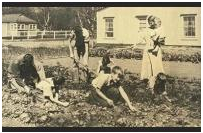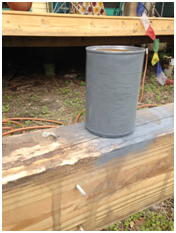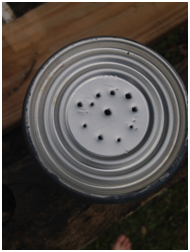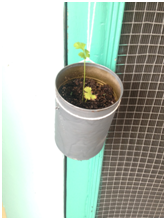Home Front Friday: Spring has Sprung!
Home Front Friday is a regular series that highlights the can do spirit on the Home Front during World War II and illustrates how that spirit is still alive today!
It’s the first day of spring! Like the cockroaches comfortably nestled in your walls, it’s time to reemerge from the house and bask in the glorious sunshine! And what better way to soak up that vitamin D than to do a bit of gardening?
During World War II, gardening was not just a great way to catch some rays – it became a necessary food source for much of the country. As the public food supply dwindled, rationing became necessary. To combat hunger, Victory Gardens were planted at public parks and private residences.
These provided over a third of the vegetables consumed in the United States! By 1943, 18 million victory gardens were flourishing – 12 million in cities and 6 million on farms. Wherever there was space (roofs, window boxes, backyards), a garden became a great way to save money and put food on the table.
Here at the World War II Museum, we have our very own Victory Garden, and some tips for how you can start one this spring with our Victory Garden Project. There’s a lot of information on starting a garden with a class of students, or on your own, including advice from gardeners, tasty recipes, and more!
Not sure you have what it takes to start a garden? Don’t worry! Try supporting some local farms in your area for fresh, organic produce. Or, start small and simple with a few herbs in these DIY tin can planters.
You’ll Need:
Tin Can(s)
Spray Paint
String/Rope
Hammer
Nail
Drill & Bit (Or not, if you don’t have one handy!)
Instructions:
1. Spray paint your leftover tin can (mine was from tomato sauce!) Let dry.
2. Using hammer and a nail, poke holes in the bottom of the can for draining purposes.
3. IF you have a drill, drill two holes in the side of the can near the top to put your string or rope through and tie. If not, do what I did using simple cooking string – tie a loop around it.
4. Plant your herb(s), one per can.
5. Hang from a secure place!
Whatever you do, be it starting your own garden, crafting some simple tin planters, or supporting local farms, get out of the house and enjoy spring before summer comes a-blazin’ and glues you to the air conditioning!
Posted by Laurel Taylor, Education Intern and Lauren Handley, Assistant Director of Education for Public Programs at the World War II Museum
- Posted :
- Post Category :
- Tags :
- Follow responses to this entry through the RSS 2.0 feed. You can skip to the end and leave a response. Pinging is currently not allowed.








Leave a Reply